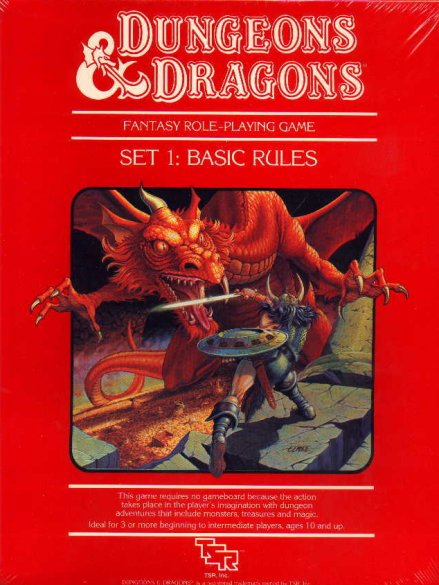Matt, this is really great. I hope you continue in this vein, and that [MENTION=1]Morrus[/MENTION] archives these links here, because the videos are an outstanding introduction to the evolution of the game.
Glad to hear you're going to expand and include Basic. The challenge of course, is
which one? Though the three versions (Holmes BD&D '77, Moldvay/Cook B/XD&D '81, Mentzer BECMI '83) are not too dramatically different from one another, there is an obvious evolution -- Holmes is a streamlining of OD&D but contains some tweaks that both lead to Moldvay and presage AD&D, while
Moldvay is a further player-friendly rewrite and BECMI is a much more expanded and unique game (but
very close to Moldvay at low levels in terms of rules content). It's important I think to note in the evolution that BD&D predates AD&D's publication by a year, and was intended to be an introduction that transitioned to AD&D, where by 1981 B/XD&D (just D&D then) and AD&D were effectively separate but still somewhat compatible games (a result of the Dave Arneson lawsuit if I have my history straight, with TSR insulating AD&D from the lawsuit outcome by giving it a new name).
I'd recommend doing BECMI (perhaps via the '91 Rules Cyclopedia) if you only do one since it is the most different in total, but I think it's important to recount that evolution and timing of the game, particularly due to the split between race-as-race and race-as-class that occurs between AD&D and D&D just as AD&D is published. Since the two versions of the game co-existed but many groups used both sets of materials interchangeably, the differences can be fascinating. (Though I'm personally more partial to Moldvay, in truth, since that's the set that introduced me to the game; I find it a bit more streamlined in play than BECMI.)
Similarly, I think you should consider looking at Unearthed Arcana as AD&D 1.5 (which you mentioned) and Skills & Powers as AD&D 2.5.
Keep 'em coming!


